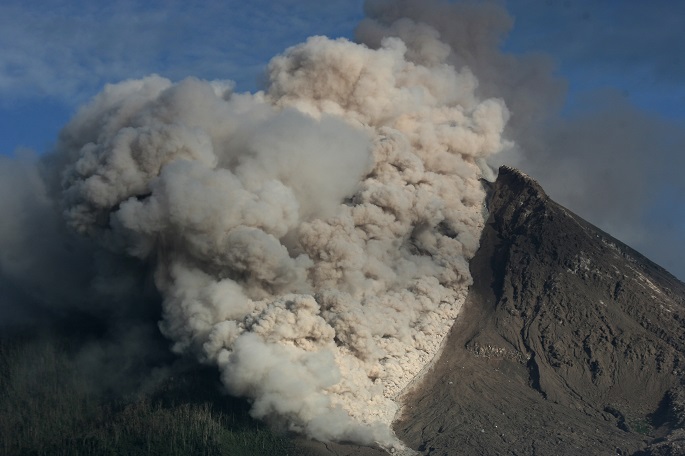Magmatic activities in Bali volcano remain high
Published : 05 Dec 2017, 03:12
Despite the ongoing visually calming condition in Bali's volcano of Mount Agung, authorities have yet to consider downgrading the alert status as magmatic activities remained high.
The intense movements of magmatic activities were clearly detected by the seismic records, leading the authorities to take extra cautious stance in anticipating the developing condition, an official monitoring the volcano said here on Monday.
"Seismic records show that pressures inside the volcano has not been released by the previous eruptions. The volcano is very active and capable of pressurization to cause the eruptions," Devy Kamil Syahbana, the head of Eastern Region Volcano Mitigation Subdivision at Indonesia's Center for Vulcanology and Geological Hazard Mitigation (PVMBG) told Xinhua.
Besides the seismic records, the geochemical indicator also showed that sulfur dioxide remains high at present, indicating that magmatic activities inside the volcano were still wildly progressing, he added.
The escalating activities inside the volcano was contradicted with the visual observation with 500 meters of white smoke seen spewing out of the volcano, a view that can be regarded as minor volcanic activities, according to Devy.
Citing the latest results of satellite image, he said that the new lava materials brought up by volcanic process from the previous eruptions have covered one third of the 60-million--cubic-meter volume of Mount Agung crater, making it a huge potential danger for the people should the eruption take place.
"Based on those observations, activities of mount Agung until today is still high, therefore the alert status remains level 4," Devy told Xinhua in an interview conducted in the PVMBG monitoring outpost in Rendang village in Bali's Karangasem regency.
The volcano's latest alert status was imposed since Nov. 27 following an eruption of black smoke and ash towering 1,500 meters above the volcano summit, forcing the airport in the resort island to be shut down.
Reflecting upon Mount Agung's devastating eruption 54 years ago that claimed more than 1,500 lives, Devy said that the calming situation in the surface cannot be used to assume the hazard level in the volcano.
The deadly 1963 eruption took place when people thought that the volcano had already inactive after it did not actively seen of emitting smoke in weeks prior to the final big eruption, he said.
According to him, the condition in Mount Agung is now quite similar to the period prior to its deadly eruption in 1963.
"We can learn a lesson from Mount Agung's eruption in 1963. At this moment we are in a intermittent phase after several eruptions. But there is possible that it may not like the scenario that occurred in 1963," Devy said, adding that the volcano has a specific character which is different from other volcanoes in the country.
"This is the complexity of Mount Agung, which is unpredictable. We can only closely monitor its development so as to minimize the impacts of the disaster for the people," he said.
As of last week over 43,000 refugees were sheltered in over 220 shelters outside the red zone areas, waiting in despair to see the end of their misery related to the raging of the volcano.


